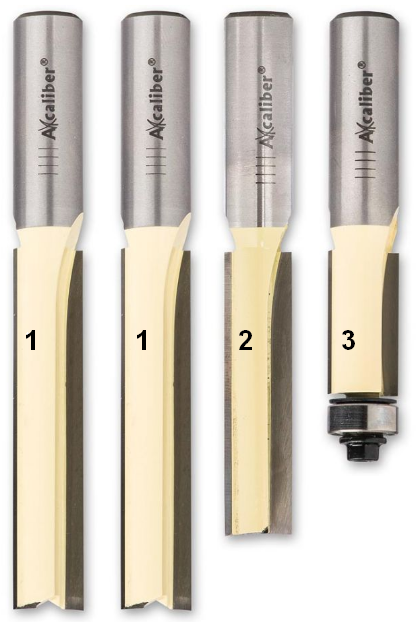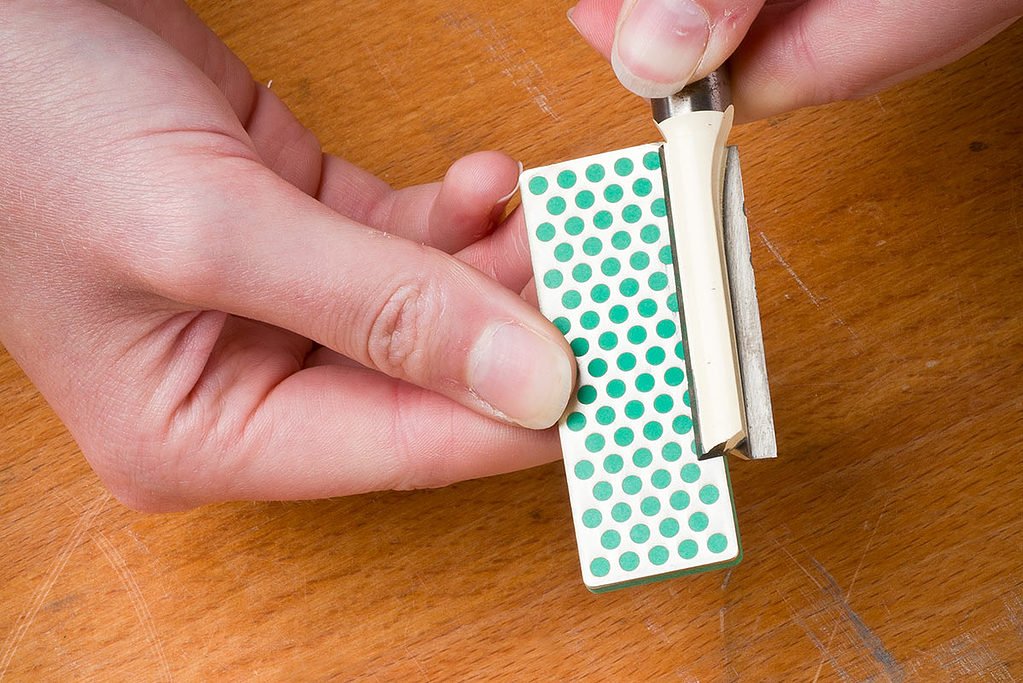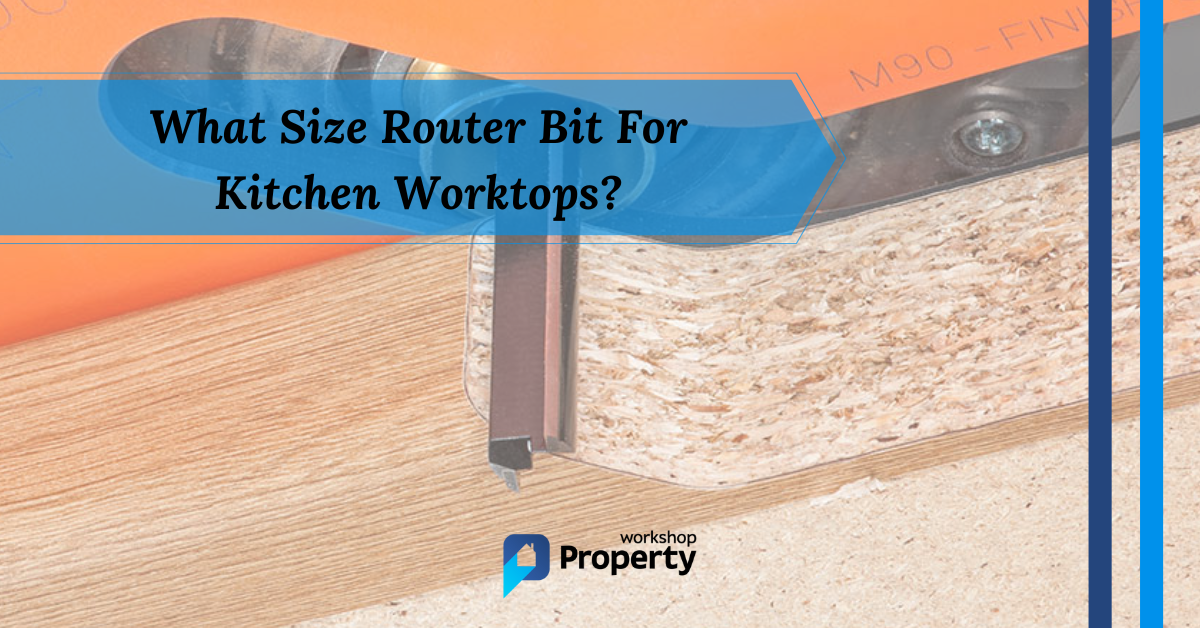I’ve always been in awe of kitchen fitters. I once had to call in a joiner to finish a kitchen because the original fitter let me down. What would have taken two days at the most by an experienced fitter took the time-served joiner over a week to complete!
It’s not that putting together the cabinets and fitting the worktops is exceptionally skilful, but there is a knack to it. You also need the right tools, including the right size bit in your router.
So, read on to find out what size router bit you need for kitchen worktops.
A 12mm or ½-inch bit is the best size router bit for kitchen worktops.
Choosing a Router Bit for Kitchen Worktops

Shank Diameter
Most experts agree that a 12mm or half-inch router bit is best for kitchen worktops. These are not the same, by the way. I.e. you can’t use a 12mm bit in a half-inch collet because a 12mm bit is 0.7mm smaller than the half-inch collet.
Some manufacturers provide bits with a ¼-inch shank and a ½-inch cutting head, but these aren’t as good because ¼-inch collets are more suited to smaller detailed work. I.e., they’re fitted to routers that run much slower than you need for a kitchen worktop.
Length
You’ll need a cutting depth of around 50mm if you want to cut through a kitchen worktop, so even though you will cut in small increments, you’ll need a bit long enough to do this.
Pro Tip: don’t cut too deep into the worktop in one go. I recommend around 6mm for each pass.
You’ll need a straight cutting bit for cutting worktops, sometimes called a dado bit. Some come with a bearing tip used to guide the cutter around a profile, but a guide bush fitted to the router does the same job.
Pro Tip: Get as much of the shank into the collet as possible. If you try to get away with pulling the bit out more to increase the cutting depth, you could find the bit working loose and possibly causing an accident.
Material
Many router bits are made from high-speed steel (HSS) or carbide-tipped steel (CTS), which are suitable for cutting softwoods.
HSS dulls quicker than CTS, so you must sharpen or replace them more often.
The best for high strength, toughness and hardness is solid tungsten carbide (STC). Its hardness falls between 8.5 and 9.0 on the Mohs scale, almost as hard as a diamond. This attribute makes them ideal for cutting through the laminate or melamine found on most kitchen worktops.

The above set of double-fluted tungsten carbide Axcaliber router bits provides everything you’ll need for cutting worktops.
- 2x 60mm long, 12.7mm diameter straight cutters for cutting the mitre joints using a jig.
- 1x 50mm long, 12.7mm diameter straight cutter with a bottom cutter for cutting through laminate or melamine for sink and hob cut-outs.
- 1x 25mm long, 12.7mm diameter flush bearing cutter for trimming laminates and melamine facings.
Double Flute vs Single Flute
Router bits typically have double flutes, like most drill bits. This feature enables them to cut much quicker, like the dual blades on an electric planer.
However, bits with a single flute have replaceable blades. The advantage of replaceable blades is that you always have a sharp edge, essential when cutting through laminate and melamine to prevent the surface from chipping.
It’s down to personal choice and how you approach DIY projects. If you’re happy to remove and replace the blades — quite a fiddly job, often resulting in cut fingertips — then a single flute bit will suit you. However, if you’d rather replace a bit or hone it occasionally, go with the more conventional double flute bit.
Router Bit Maintenance Tips

Our guide on how to sharpen drill bits provides some great tips, but for sharpening router bits, it’s simply a case of using sandpaper and WD-40.
When we talk about sharpening, we usually mean honing. Our wood chisels article describes the difference between sharpening and honing in more detail. In short, honing is realigning the cutting edge without removing any material.
You’ll know when it’s time to hone your bit because pushing the router through the worktop is more challenging. Besides, you should rub it down before each job to keep it sharp. Here’s what you do:
- Remove any residue from the router bit using a soft brush and a rag. If the bit is clogged up, use a blade cleaner to dissolve any resin.
- Place the sandpaper — 120 or 220 grit should do it — on a solid surface.
- Run the flat cutting face (not the outer bevel) of each bit’s flute along the sandpaper, maintaining steady pressure to avoid an uneven edge. To maintain balance, do this the same number of times on each flute.
- Wipe down again with the rag and lubricate the bit using WD-40.
Doing the steps above regularly will increase the longevity of your bits.
Pro Tip: Check out this guide from Axminster to learn more about caring for your router bits.
Final Thoughts
So, the quick answer is 12mm or ½-inch, depending on your collet size, but be sure to get the right length to cut through the depth of your worktops.
Also, don’t forget the bit’s construction materials, as some wear out much more quickly than others. I recommend solid tungsten carbide because it’s the toughest of the lot.
If you don’t own a router, and I strongly recommend you do, check out our guide to the best woodworking routers in the UK.

